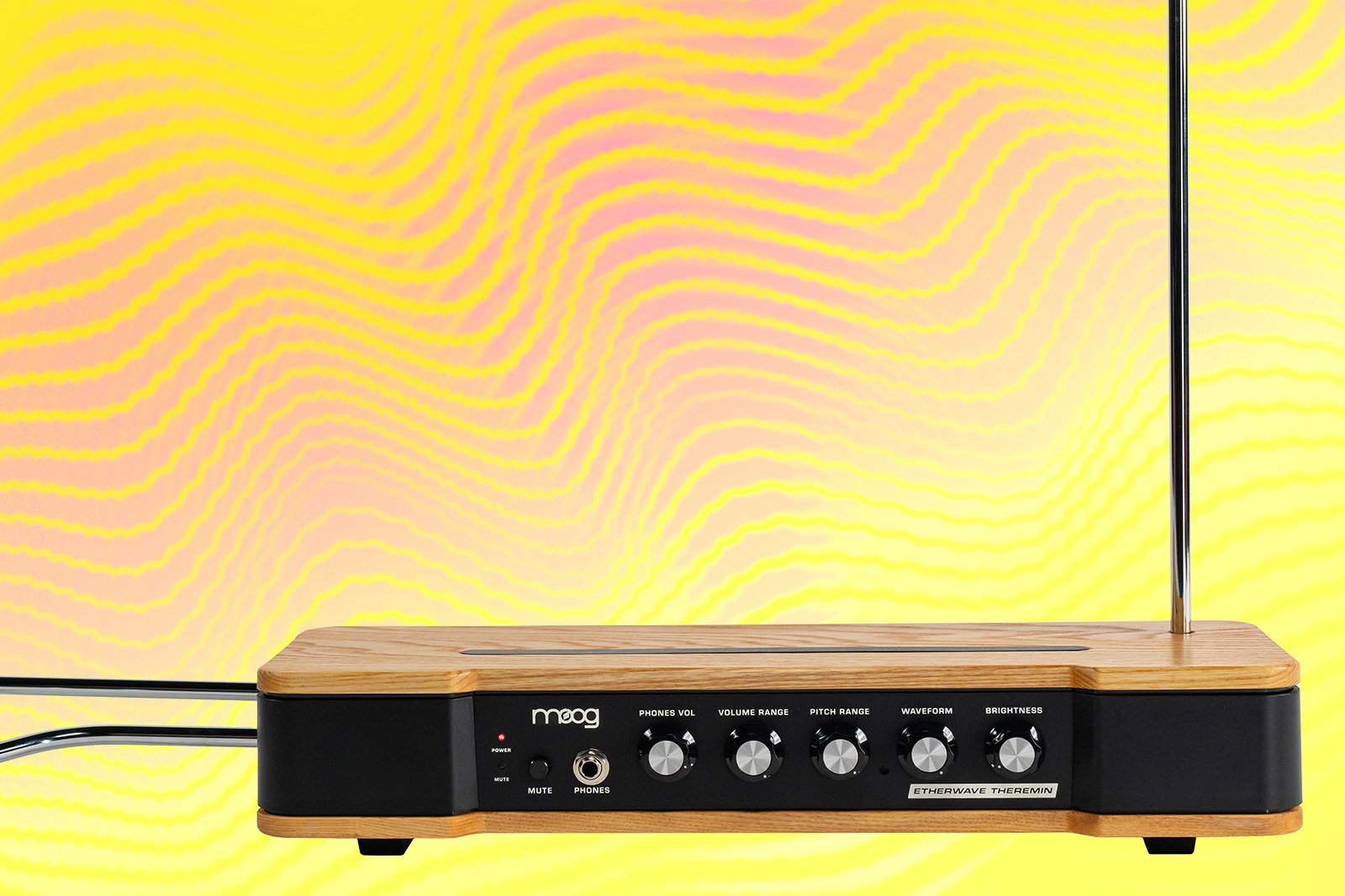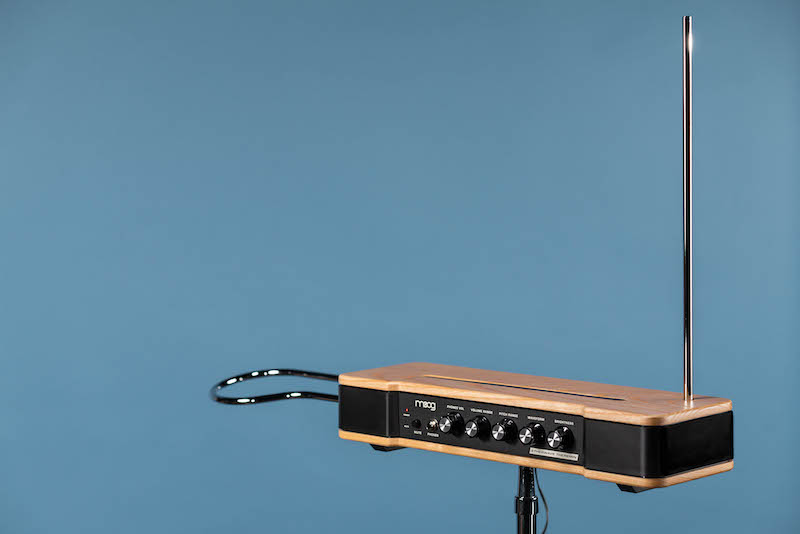Moog's Etherwave theremins are respected tools among professional thereminists and hobbyists alike, and we're happy to report that after a short hiatus, they're back: the new Moog Etherwave Theremin is here.
The theremin as an instrument has been around for quite some time, and has gone through several waves of renewed interest and popularity. But, in 2022, why make a new theremin? And what the heck is a theremin, anyway? Read on for some more thoughts about this fascinating instrument, as well as a breakdown of what makes the new Moog Etherwave Theremin so special.
Why Should We Care About the Theremin?
The theremin is, without doubt, a peculiar musical instrument. Famed for being "the only instrument you play without touching," the theremin is one of the earliest portable electronic musical instruments, pre-dating what we commonly think of as a "synthesizer" by several decades. Introduced c. 1920, the theremin subverts expectations of how musical instruments should function by using two antennae to detect the player's proximity to the instrument—translating their proximity into information for pitch and loudness, respectively. There are no keys, strings, reeds, or mouthpieces: just electrical fields and pure, haunting electronic sound.
It might seem like a gimmick to create an instrument that is played by waving your hands in the air...but to look at things in that way would sell the instrument quite short. Countless musicians have developed a remarkable level of skill playing this particularly challenging instrument, from early greats like Clara Rockmore to modern-day virtuosi such as Pamelia Stickney, Grégoire Blanc, Lydia Kavina, and Carolina Eyck.
But what has given this now century-old, unarguably peculiar electronic instrument such staying power? Well, its quirkiness alone is surely a factor—but in (or, er, near) the hands of a skilled player, it has a simply uncanny, perplexing beauty. Somewhere halfway between the sound of a human voice and a solo violin, the theremin can be deeply expressive. It can be eerie yet soothing, unnerving yet calming...and a variety of other paradoxes that are simply delightful to hear and feel.
In 2020, Moog celebrated the theremin's 100th anniversary with the release of Claravox Centennial—the newest in a long line of high-quality theremins designed for both experienced players newcomers to this quirky-yet-soulful instrument. However, the Claravox's release coincided with the gradual disappearance of the Etherwave Standard and Etherwave Plus theremins, which were both long-standing favorites among new theremin players. After all, the Etherwave series are where many of us got our start with theremin experimentation: they were high-quality instruments placed at a price pleasantly between the Theremini and the Claravox, acting as a high-performance yet still-affordable way of getting your hands on (er, or close to) a classic, analog theremin.
The Etherwave series is back and even better than ever before with the release of Moog's new Etherwave Theremin: the next chapter in their long history of theremin production. If you're interested in the history of the theremin and Moog's role in theremin development, I'd recommend checking out our article about the Claravox Centennial; but for more about the new Etherwave Theremin, read on.
The New Moog Etherwave Theremin
Continuing their long history of theremin production, the Etherwave Theremin represents a new standard in analog theremin design and performance. While it is aesthetically similar to prior Etherwave models, it adds a number of sonic improvements and quality-of-life features that make it a compelling addition to any musician's setup—be they aspiring thereminists, composers looking for new inspirational tools, or even experimental musicians or modular synthesists looking for a new avenue for sonic experimentation and performance.
The Etherwave Theremin features original Bob Moog-designed circuitry, upgraded to improve playability and refine bass response. This model features a wide sonic range, with an "accurate five-octave pitch range and balanced spacing between notes," which I presume to mean that note spacing remains consistent across five total octaves. Having played a number of theremins, I can say that this feature, while it might seem boring to read about, is a huge deal and would be a tremendous aid in maintaining pitch accuracy while playing. Front panel controls include the classic Waveform and Brightness controls, providing access to tones ranging from clean, sine-like singing tones to brash, throaty, raspy bass. The front panel also features Volume Range and Pitch Range controls, great for easily setting up your preferred playing range and general sensitivity.
One of the biggest improvements on the new Etherwave Theremin lies in its monitoring capabilities. Given the lack of a physical playing interface, starting to play a theremin mid-song can be a challenge—it's difficult to know that you're starting on exactly the right pitch. Many players resort to complex monitoring setups or use tuner pedals so that they can visually identify the current pitch without passing sound to their P.A.; but the Etherwave Theremin has a built-in solution to this exact problem. Featuring a front-panel headphone output with dedicated volume control and a front-panel mute switch for the rear-panel main audio output, it's possible to find the right pitch before an audience can hear you. Of course, operating a front-panel switch for this specific purpose can be a challenge...but this theremin also features a rear-panel connection for a standard footswitch, ideal for operating this muting function while keeping your hands where they should be.
And that brings us to our favorite new feature on the Etherwave Theremin: 3.5mm outputs for pitch CV, volume CV, and gate signals. This makes it easily possible to integrate the new Etherwave with Eurorack modular synthesizers and countless desktop semi-modular synths (including those from Moog themselves, such as the ever-popular Mother-32, DFAM, and Subharmonicon). This means that it's quite simple to expand your Theremin's sound palette extensively using modular synthesizers—you could directly control a synth voice with your theremin, harmonize it, or even quantize its pitch CV for easy arpeggio sweeps and true-to-pitch melodies. But naturally, despite the fact that these signals originate from the Etherwave's pitch and volume antennae, you don't necessarily need to use them to control your synth's pitch and volume. With the right modules and some clever patching, the Etherwave could trigger an onslaught of samples, alter your effect processing, act as a gestural panning control, or a performative mixer...or any combination of these and beyond. While CV output was part of the previous Etherwave Plus, we're happy to see it on board as a standard feature of the Etherwave Theremin, providing tons of opportunity for performative sonic experimentation. That's the kind of thing I really love.
Etherwave Theremin maintains a similar form factor as prior Etherwave offerings: a rectangular enclosure with detachable antennae, which can be easily mounted onto a standard US threaded mic stand (or a desktop). Note that the new Etherwave, though, features internal connections for the antennae (rather than the prior models' screw-on antennae), making setup quite quick and easy. Moreover, Moog produces an Etherwave Theremin travel case, complete with molded tray for securely storing the antennae.
The Next Wave
While the theremin has been around for a long time, we're confident that it still has a long life ahead of it. Often seen as a novelty, it is in actuality a quite capable instrument—and Moog's continued development on this particular time-tested design has produced one of their most practical, accessible, and flexible instruments to date.
Ideal for classical instrumentalists, exploration-driven composers, modular synthesists, and experimental musicians alike, the Etherwave Theremin is no doubt a welcome addition to Moog's legacy of high-quality, great-sounding, and fun theremins. We look forward to seeing and hearing what the next wave of thereminists will accomplish.


















